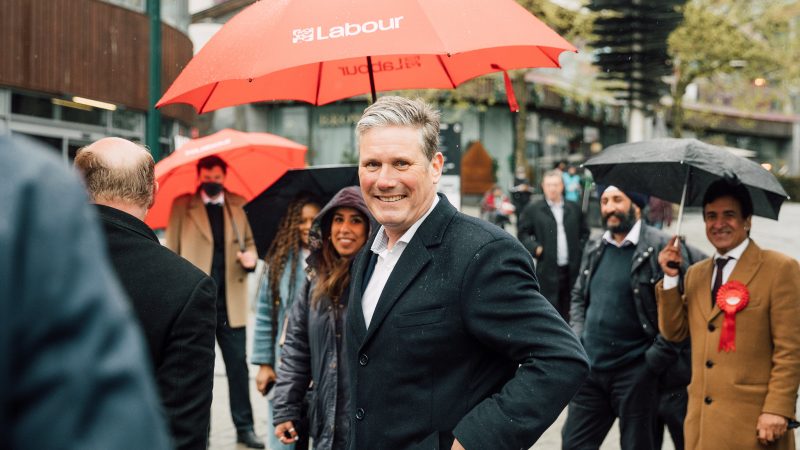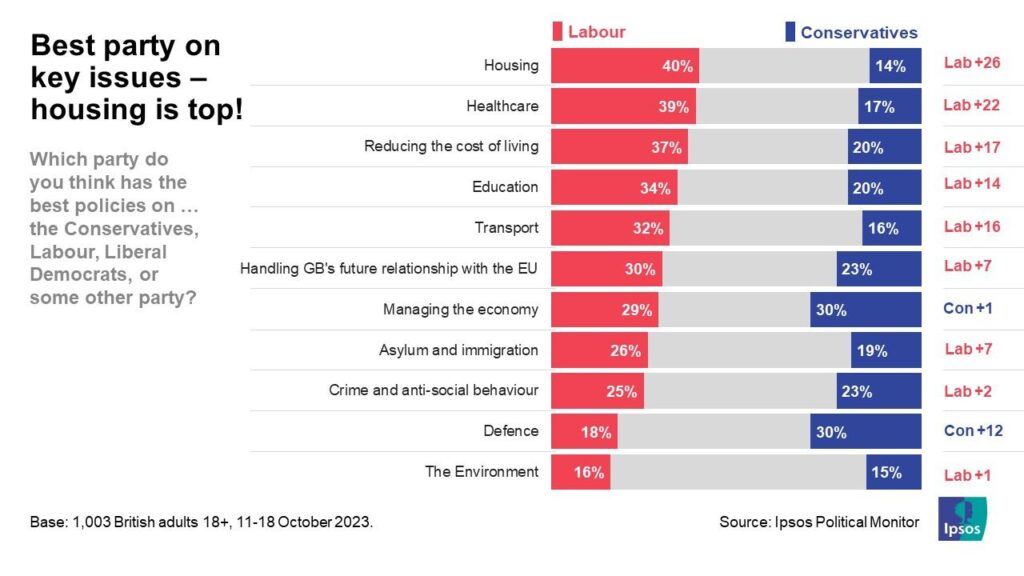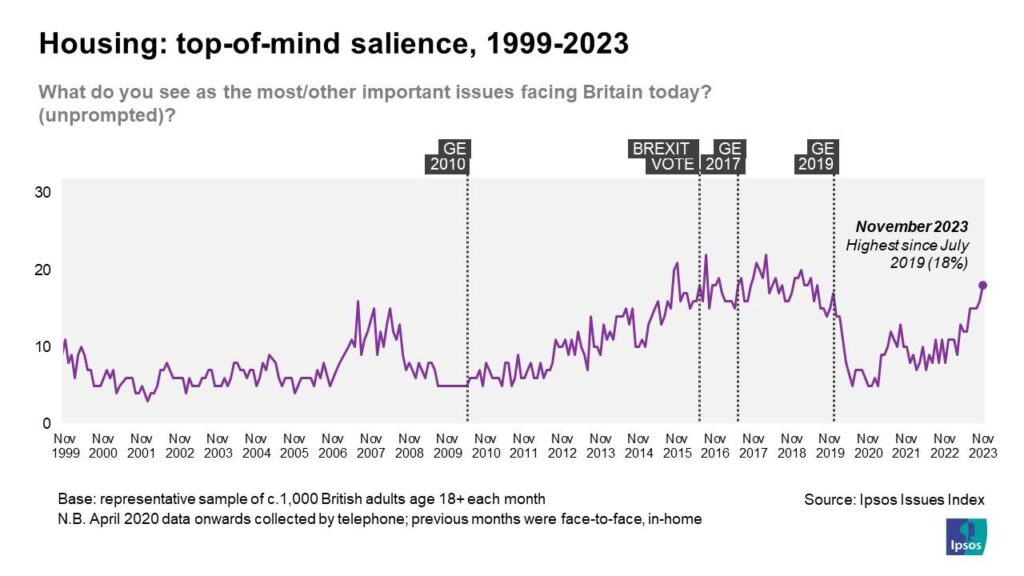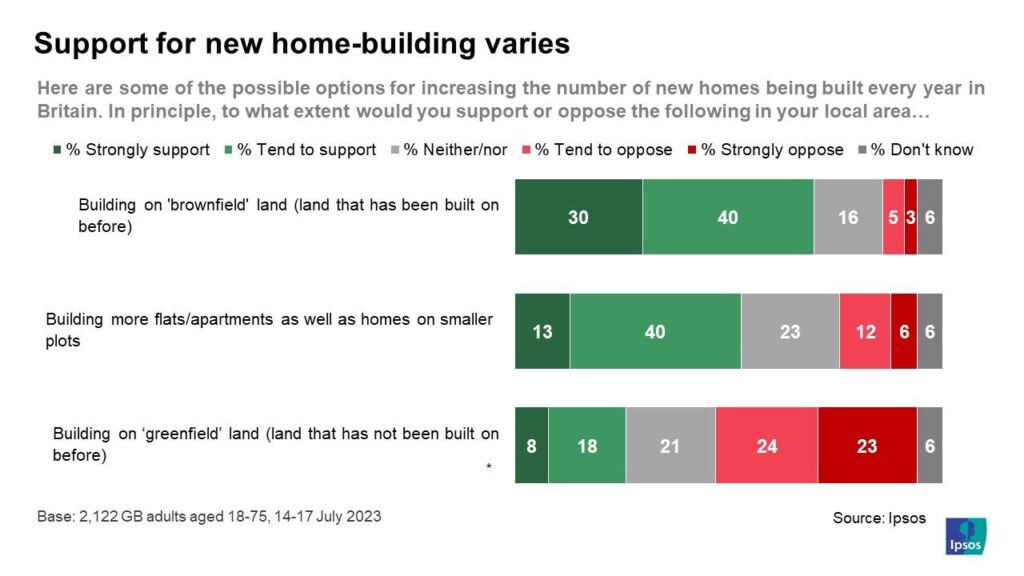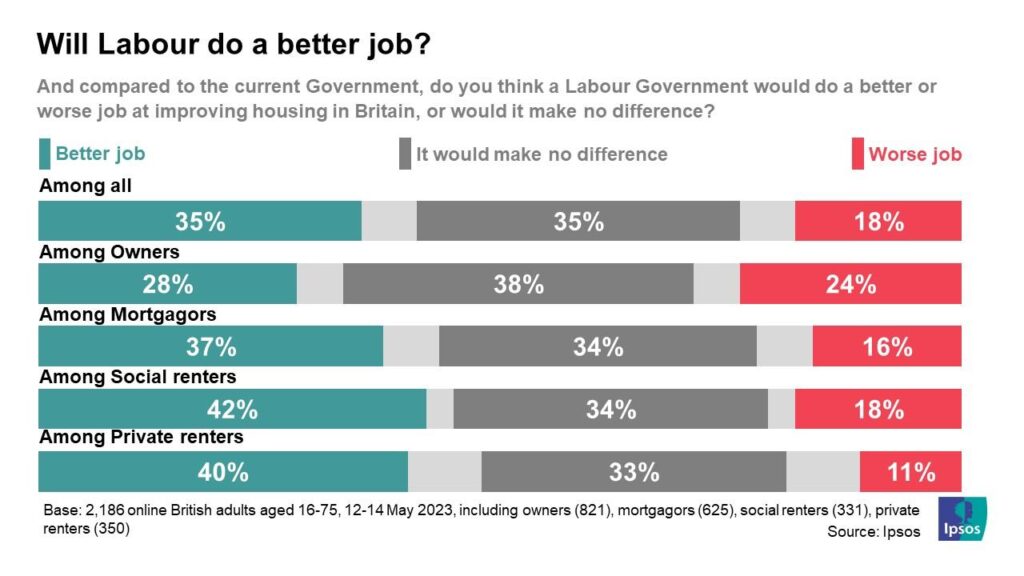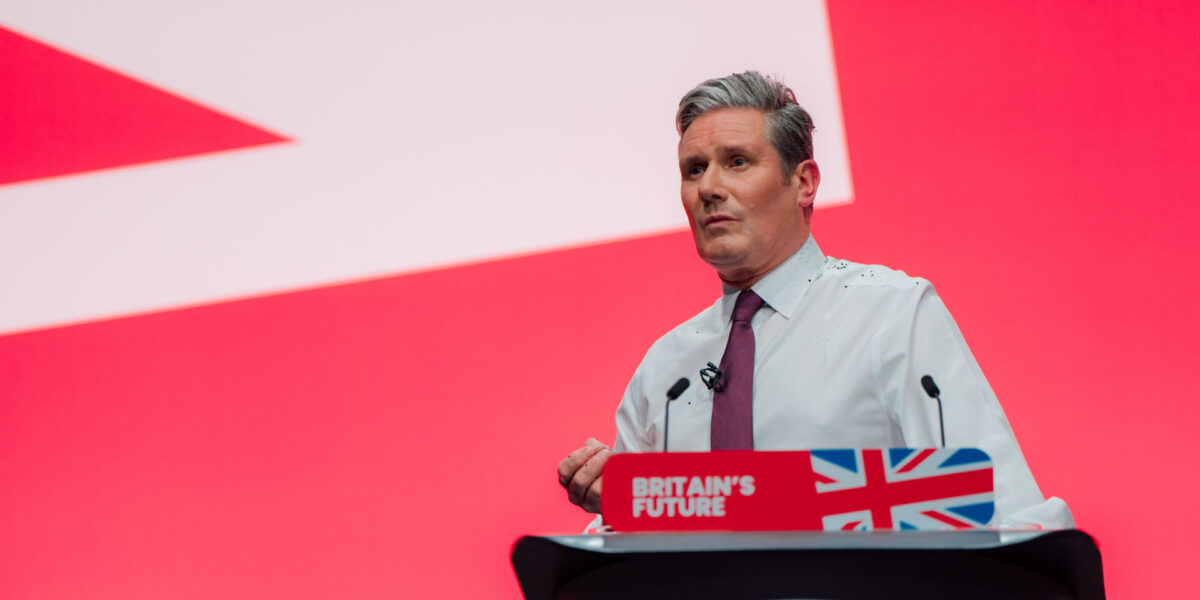Politicians, like people, often define themselves by what they are not – by what, and who, they are opposed to. They usually like to do so knowing they have public opinion on their side.
Before last year’s election, Sir Keir Starmer was happy to identify as a YIMBY (Yes In My Back Yard) – someone who is supportive of local housebuilding – rather than a NIMBY (Not In My Back Yard) and committed to backing the “builders over the blockers”.
But is the country on his side? Ipsos polling suggests that they are, with Britons’ instincts appearing to be more ‘build’, than ‘block’. In principle, 46% support building more homes in their local area, while 25% oppose it. But a substantial 24% are neither supportive nor opposed and other Ipsos research has shown attitudes to be conditional, based on what is proposed.
However, if people lean more instinctively towards YIMBYism, they do not know it. While 26% expect that more people support building new homes than oppose it, 42% think that more oppose than support it and 20% think support and opposition are matched (12% say they do not know).
This suggests that NIMBYism is less prevalent than is often portrayed. NIMBYs are, themselves, particularly out of touch – while 28% of those who support building new homes wrongly believe that opponents outnumber supporters, 72% of opponents to new homes wrongly believe that they are in the majority.

This matters because, when asked what the primary factors are contributing to Britain’s housing shortage, the public continue to see opposition at the top of the list, alongside the financial position of local councils preventing them from building new homes, and a restrictive planning system. It is especially salient among opponents of new building.
This data has several political implications. First, it should embolden Labour, and local politicians, to be positive about housebuilding in both language and deed. Second, it gives YIMBYs a new target to take on – in addition to NIMBYism itself – the mistaken notion that opposition to housebuilding is the prevailing social norm (something which can be an important influence on public opinion).
These findings should give encouragement to YIMBYs and supporters of the Planning and Infrastructure Bill. Moreover, polling shows that the public tend towards supporting rather than opposing several of the Government’s planning policies, ranging from the mandatory installation of solar panels on new-build property to developing ‘grey belt’ land.
But there is also plenty of jeopardy ahead for Labour. Britons think that the means of how housebuilding is done matters as much, if not more, than the ends. Six in ten (61%) say that higher priority should be given to protecting and improving the environment even if it means fewer homes are built, three times the proportion (19%) who say that priority should be given to building homes quickly, even if it comes at the expense of environmental concerns.
An identical pattern exists in favour of prioritising the views of local councils and residents over the volume and speed of construction, a preference which is particularly strong among opponents of new building.
These sentiments explain the relative unpopularity of one component of the Bill – the extension of compulsory purchase – and the popularity of another – requiring developers to contribute to a Nature Restoration Fund.
In a similar vein, previous polling by Ipsos found that the public prioritises improving the quality and design of new homes over simply increasing the number of homes built (by contrast, MPs view both aspects as equally important). And public support for building varies according to the design aesthetics of new builds.
To put it mildly, the politics of housebuilding is littered with potential traps for politicians of all stripes. What makes public opinion endlessly fascinating, sometimes frustrating, is its nuance. People favour local decision-making but also central targets. They see the merits of new housing supply but bemoan the strain on existing infrastructure.
The data suggests that NIMBYism isn’t the dominating force it is sometimes made out to be, but neither can YIMBYs just turn up and win. While there is significant appetite for both building and planning reform, these are views, not values, liable to shift and change according to people’s lived and local experiences.
The public – and Labour’s own voters – will not look kindly on a system that shuts out local people who will live in, or nearby, over a million new homes.
Builders build houses. But so too do hearts and minds.

